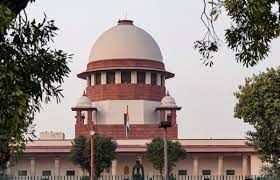UPSC Daily Current Affairs- 8th July 2023 | Current Affairs & Hindu Analysis: Daily, Weekly & Monthly PDF Download
GS-I
Taylor Glacier
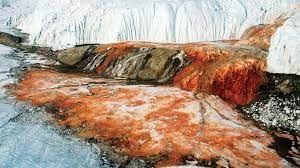
Why in News?
Recently, after more than a century of intrigue, scientists have discovered why Taylor Glacier in Antarctica bleeds 'crimson red' drool from its tongue.
About Taylor Glacier:
- It was first discovered in 1911 by a British expedition to the continent.
- The crimson drool is known as Blood Falls.
- The red waterfall is located in the McMurdo Dry Valleys region of Antarctica.
- Scientists analyzed the contents using powerful electron microscopes and revealed that there were little nanospheres and they were iron-rich.
- The minuscule particles come from ancient microbes and are a hundredth of the size of human red blood cells.
- They are highly abundant in the meltwaters of Taylor Glacier, which was named after the British scientist Thomas Griffith Taylor who first noticed the Blood Falls on the 1910 to 1913 expedition.
- Along with iron, the nanospheres also contain silicon, calcium, aluminum, and sodium.
Key Facts about Antarctica
- It is the world’s southernmost and fifth largest continent. Its landmass is almost wholly covered by a vast ice sheet.
- It has an extremely cold, dry climate. Winter temperatures along Antarctica’s coast generally range from -10° to -30°C (14° to -22°F).
- Lichens, mosses, and terrestrial algae are among the few species of vegetation that grow in Antarctica.
- The islands of the Antarctic region are: South Orkney Islands, South Shetland Islands, South Georgia
Source: AIR
Dalai Lama
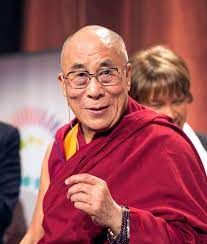
Why in News?
Prime Minister Narendra Modi has greeted, Dalai Lama on his 88th birthday recently.
Background:-
- In a tweet, the Prime Minister informed that he has also spoken to Dalai Lama on the phone and wished him a long and healthy life.
About Dalai Lama:-
- The Dalai Lama is the spiritual leader who belongs to the Gelugpa tradition of Tibetan Buddhism.
- Gelugpa tradition: it is the largest and most influential tradition in Tibet.
- The Dalai Lamas are believed to be manifestations of Avalokiteshvara or Chenrezig.
- Avalokiteshvara: the Bodhisattva of Compassion and the patron saint of Tibet.
- There have been only 14 Dalai Lamas in the history of Tibetan Buddhism.
- The first and second Dalai Lamas were given the title posthumously.
- Tenzin Gyatso: the 14th and current Dalai Lama.
- In 1989, he was awarded the Nobel Peace Prize for his non-violent struggle for the liberation of Tibet.
Historical Background:-
- Until China’s annexation of Tibet in the 1950s, the Dalai Lamas were the head of the Tibetan government.
- Later, plans were made to bring Tibet officially under Chinese control.
- 1959: Tibetans took to the streets demanding an end to Chinese rule.
- The current Dalai Lama fled to India during this Tibetan uprising.
- Former Indian Prime Minister Jawaharlal Nehru granted him permission to form the ‘Tibetan government in exile’ in Dharamsala (Himachal Pradesh).
- Following the Buddhist belief in the principle of reincarnation, the current Dalai Lama is believed by Buddhists to be able to choose the body into which he is reincarnated.
- That person, when found, will then become the next Dalai Lama.
- According to Buddhist scholars, it is the responsibility of the High Lamas of the Gelugpa tradition and the Tibetan government to seek out and find the next Dalai Lama following the death of the incumbent.
- If more than one candidate is identified, the true successor is found by officials and monks drawing lots in a public ceremony.
- Once identified, the successful candidate and his family are taken to Lhasa (or Dharamsala) where the child studies the Buddhist scriptures in order to prepare for spiritual leadership.
Tibetan Buddhism
- Tibetan Buddhism is the combination of the teachings of Mahayana Buddhism with Tantric and Shamanic, and the teachings of Bon, an ancient Tibetan religion. (UPSC CSE: Bamiyan Buddhas)
Impact of Tibet and the Dalai Lama on India and China Relations:-
- Background: Tibet was India’s actual neighbour for centuries.
- 1914: Tibetan representatives, along with Chinese representatives, signed the Shimla convention with British India, delineating boundaries.
- However, following China’s full accession of Tibet in 1950, the convention and the McMahon line that separated the two countries were rejected.
- 1954: India and China signed an agreement in which they agreed to recognize Tibet as the “Tibet region of China.”
- Current Situation: One of the major irritants in India-China relations is the Dalai Lama and Tibet.
- China regards the Dalai Lama as a separatist with considerable clout among Tibetans.
- In the face of rising tensions between India and China, India’s Tibet policy has shifted.
- This policy shift indicates that the Indian government is actively negotiating with the Dalai Lama in public forums.
- The shift in India’s Tibet policy is increasing tensions between India and China.
Source: AIR
GS-II
Gramodyog Vikas Yojna
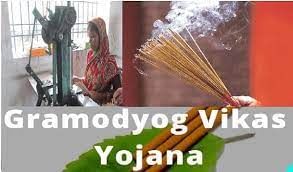
Why in News?
Recently, the Lieutenant Governor of Delhi distributed Honey Bee-Boxes and Toolkits to 130 beneficiaries under the Gramodyog Vikas Yojna.
Background:-
- The program was organized under the Khadi and Village Industries Commission (KVIC), Ministry of Micro, Small and Medium Enterprises, State Office Delhi, Government of India.
- Addressing the occasion, Shri Vinai Kumar Saxena emphasized the vital role played by the Khadi and Village Industries Commission in generating employment opportunities in rural India.
About Gramodyog Vikas Yojna:-
- Launched:
- Objective: assisting and developing of agarbatti industry and its artisans thereby.
- Ministry: Ministry of Micro, Small and Medium Enterprises (MSME)
- The programme aims to enhance the production of ‘Agarbatti’ in the country and create sustainable employment for the traditional Artisans, by providing them with regular employment and an increase in their wages.
Components of the Yojana:-
- Research & Development and Product Innovation: R&D support would be given to the institutions that intend to carry out product development, new innovations, design development, product diversification processes etc.
- Capacity Building: exclusive capacity building of staff, as well as the artisans, would be adequately addressed through the existing Multidisciplinary Training Centers (MDTCs) and institutions of excellence.
- Marketing & Publicity: The institutions will be provided market support.
- It will be done by way of preparation of a product catalogue, Industry directory, market research, new marketing techniques, buyer-seller meet, arranging exhibitions etc.
Khadi and Village Industries Commission (KVIC)
- Establishment:
- It is a statutory body established under the Khadi and Village Industries Commission Act, of 1956.
- Objectives of KVIC:-
- To boost employment in the country.
- To promote the promotion and sale of Khadi articles.
- To cater to the self-reliance doctrine of the country by empowering underprivileged and rural sections of society.
- Function: The KVIC is charged with the planning, promotion, organization and implementation of programmes for the development of Khadi and other village industries in the rural areas in coordination with other agencies engaged in rural development wherever necessary.
- Ministry: Ministry of Micro, Small and Medium Enterprises
Source: PIB
SC Collegium proposes new CJs to 7 High Courts
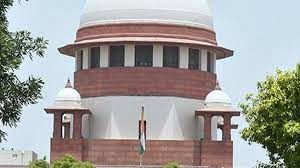
Why in News?
The Supreme Court Collegium, led by Chief Justice of India D. Y. Chandrachud, has recommended new Chief Justices for seven major High Courts in India.
- The recommendations focus on criteria such as seniority, regional representation, and gender diversity.
What is Collegium System?
- The Collegium of judges is the Indian Supreme Court’s invention.
- It does not figure in the Constitution, which says judges of the Supreme Court and High Courts are appointed by the President and speaks of a process of consultation.
- In effect, it is a system under which judges are appointed by an institution comprising judges.
- After some judges were superseded in the appointment of the CJI in the 1970s, and attempts made subsequently to effect a mass transfer of High Court judges across the country.
- Hence there was a perception that the independence of the judiciary was under threat. This resulted in a series of cases over the years.
Evolution: The Judges Cases
- First Judges Case (1981) ruled that the “consultation” with the CJI in the matter of appointments must be full and effective.
- However, it rejected the idea that the CJI’s opinion, albeit carrying great weight, should have primacy.
- Second Judges Case (1993) introduced the Collegium system, holding that “consultation” really meant “concurrence”.
- It added that it was not the CJI’s individual opinion, but an institutional opinion formed in consultation with the two senior-most judges in the Supreme Court.
- Third Judges Case (1998): On a Presidential Reference for its opinion, the Supreme Court, in the Third Judges Case (1998) expanded the Collegium to a five-member body, comprising the CJI and four of his senior-most colleagues.
Functions of the Collegium
(1) Appointment of CJI
- The President of India appoints the CJI and other Supreme Court judges.
- The outgoing CJI recommends his successor, and the appointment is typically made based on seniority, following the controversy of the 1970s.
- The Union Law Minister forwards the recommendation to the Prime Minister, who then advises the President on the appointment.
(2) Appointment of Other SC Judges
- The proposal for appointing other judges to the Supreme Court is initiated by the CJI.
- The CJI consults other members of the Collegium, as well as the senior-most judge from the High Court to which the recommended person belongs.
- The opinions of the consultees must be recorded in writing and included in the file.
- The Collegium sends the recommendation to the Law Minister, who forwards it to the Prime Minister for the President’s advice.
(3) Appointment of High Court Judges
- Chief Justices (CJs) of High Courts are appointed based on the policy of having Chief Justices from outside the respective states. The Collegium makes the final decision on their elevation.
- The appointment of High Court judges is recommended by a Collegium consisting of the CJI and two senior-most judges.
- The Chief Justice of the High Court concerned initiates the proposal in consultation with two senior-most colleagues.
- The recommendation is then sent to the Chief Minister, who advises the Governor to forward the proposal to the Union Law Minister.
(4) Transfer Recommendations by the Collegium
- The Collegium is also responsible for recommending transfers of Chief Justices and other judges.
- Article 222 of the Constitution allows for the transfer of judges from one High Court to another.
- When a Chief Justice is transferred, a replacement must be simultaneously appointed for the concerned High Court. An acting Chief Justice can be appointed for a maximum of one month.
- In transfer matters, the CJI’s opinion is determinative, and the consent of the judge being transferred is not required.
- However, the CJI should consider the views of the Chief Justice of the concerned High Court and one or more Supreme Court judges who are in a position to provide their opinions.
- All transfers must be made in the public interest, aiming for the betterment of the administration of justice.
Source: The Hindu
Supreme Court asks NGO to move govt against Sarpanch-Patism
Why in News?
The Supreme Court of India has stated that the government, rather than the judiciary, should address the issue of men exerting power behind elected women who remain “faceless wives and daughters-in-law” in grassroots politics.
- The court’s remarks came in response to a petition filed by an NGO which highlighted the phenomenon of unelected male relatives wielding political influence, undermining the spirit of women’s reservation in Panchayati Raj Institutions (PRIs).
Women in PRIs: Legal Aspects
(a) 73rd Constitutional Amendment Act, 1992:
- Mandates 33.3% reservation for women in PRIs across the country.
- Recognizes the Gram Sabha as the foundation of the Panchayat Raj System, empowering it to perform functions and exercise powers entrusted by the State Legislatures.
- Some states have increased the reservation to 50%, including Andhra Pradesh, Chhattisgarh, Gujarat, Himachal Pradesh, Bihar, etc.
- Out of the 30.41 lakh elected representatives in PRIs, 13.74 lakh (45.2%) are women.
(b) Article 15(3) of the Constitution:
- Empowers the State to make special provisions for women.
- Allows the government to introduce measures to ensure gender equality and promote the interests of women.
(c) Article 243D:
- Provides for the reservation of one-third of the total number of seats and offices of Chairpersons in PRIs for women.
- The reserved seats and offices are allocated through rotation to different constituencies within a Panchayat.
- These reservations for women are in addition to the reservations for Scheduled Castes (SCs) and Scheduled Tribes (STs) in all three tiers of PRIs.
(d) Intersectional Reservations:
- The reservation of seats and offices for women in PRIs also falls within the overall reservations for Scheduled Castes (SCs) and Scheduled Tribes (STs) in all three tiers of PRIs.
- This provision aims to address the intersecting disadvantages faced by women from marginalized communities.
(e) Proposed 110th Constitution Amendment Bill:
- Introduced in the Lok Sabha in 2009 to bring about 50% reservation for women in Panchayats across all states.
- The bill aimed to increase the reservation beyond the existing 33.3% mandated by the 73rd Amendment Act.
- Despite multiple tabled attempts, the bill was not passed into law.
Proxy Sarpanchs in India
- It is generally observed where an elected lady Sarpanch (the head of a Panchayat) delegates their powers and responsibilities to someone else, typically a family member or a trusted individual.
- This proxy then acts as a representative or substitute for the Sarpanch in carrying out their duties.
- Quite often, this delegation is forcefully acquired from women.
Issues created
- Undermining Women’s Representation: Proxy Sarpanchs can disproportionately impact women’s representation in Panchayat politics.
- Credit-mongering issues: This undermines the gains made in women’s political campaigning and hampers their ability to exercise power and decision-making authority directly.
- Reinforcement of Gender Stereotypes: The appointment of proxy Sarpanchs can perpetuate traditional gender roles and reinforce stereotypes that women are not capable or suitable for leadership positions.
- Exclusion from Decision-Making: When a proxy is appointed, it often sidelines the elected woman Sarpanch, denying her the opportunity to actively participate in decision-making processes.
- Impacts gender-sensitiveness of policies: Proxy Sarpanchs may lack the understanding of women’s specific needs and issues, resulting in policies and initiatives that do not adequately address gender-related concerns.
Concern raised in the petition
- Mockery of Democracy: The NGO argued that men acting as proxies for elected women is a mockery of constitutional democracy, despite the provision of one-third reservation for women.
- Cultural Barriers and Socio-economic Empowerment: The amendment aimed to break cultural barriers and improve the socio-economic conditions of women through representative democracy at the grassroots level.
Court’s Response
- Not an Executive Authority: The court acknowledged the issue but emphasized that it is not the role of the judiciary to create a spirit of empowerment.
- Focus on women empowerment: The court pointed out that preventing influential individuals’ wives from contesting elections is not feasible, and empowering women requires an evolutionary process.
- Government’s Responsibility: The court highlighted that the Ministry of Panchayati Raj should address the petitioner’s grievance and explore better mechanisms to implement the objectives of women’s reservation.
- Expert Committee and Support Mechanism: The petitioner suggested the formation of an expert committee and the provision of the right support mechanism for women. However, the court deemed this an unrealistic expectation from the judiciary.
Way forward
- Engage Men as Allies: Promote male allies in supporting women’s representation in PRIs. Encourage men to actively advocate for gender equality, challenge patriarchal norms, and work towards creating a more inclusive and equitable political environment.
- Capacity Building and Leadership Development: Provide training and capacity-building programs for women elected representatives in PRIs.
- Political Awareness and Participation: Conduct awareness campaigns to educate women about their rights, the importance of political participation, and the impact of their involvement in PRIs.
- Inter-Gender Dialogues: Organize inter-generational dialogues where older leaders and women can exchange knowledge, experiences, and perspectives. This can help bridge the generation gap, promote inter-generational collaboration, and strengthen the collective power of women in PRIs.
Conclusion
- It is the responsibility of the executive authority to find suitable solutions and ensure the effective implementation of women’s reservations in panchayat governance.
Source: The Hindu
GS-III
Barh Super Thermal Power Project (STPP)
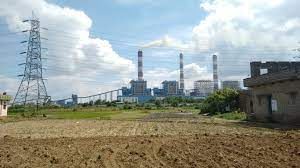
Why in News?
State-owned NTPC Ltd recently commissioned the 660 megawatt (MW) unit-2 of the stage-I (3 x 660 MW) of the Barh Super Thermal Power Project (STPP).
About Barh Super Thermal Power Project (STPP):
- STPP is a 3.3GW supercritical coal-fired power station being developed by India’s state-owned National Thermal Power Corporation (NTPC) in Barh, Bihar.
- The power plant will house a total of five coal-fired power generating units of 660MW capacity each.
- The mega power project is being developed in two stages, with stage one comprising three units for a total installed capacity of 1,980MW and stage two involving two units for a total capacity of 1,320MW.
- The plant utilizes supercritical pressure technology to obtain improved thermal efficiency while reducing greenhouse gas emissions.
- Source of water: Barh town is located closer to the River Ganga which is the source of water for the coal-fired thermal power facility.
- Source of Coal:
- The coal required for stage one operation of the project will be procured from the Central Coal Fields, a subsidiary of India’s state-owned Coal India Limited (CIL).
- Coal for the stage two operations comes from the NTPC Chatti-Bariatu coal mine located in Jharkhand.
What is Supercritical pressure technology?
- Supercritical (SC) and ultra-supercritical (USC) power plants operate at temperatures and pressures above the critical point of water, i.e. above the temperature and pressure at which the liquid and gas phases of water coexist in equilibrium, at which point there is no difference between water gas and liquid water.
- This results in higher efficiencies – above 45%.
- SC and ultra -supercritical USC power plants require less coal per megawatt-hour, leading to lower emissions (including carbon dioxide and mercury), higher efficiency and lower fuel costs per megawatt.
Source: Indian Express
|
38 videos|5293 docs|1118 tests
|


